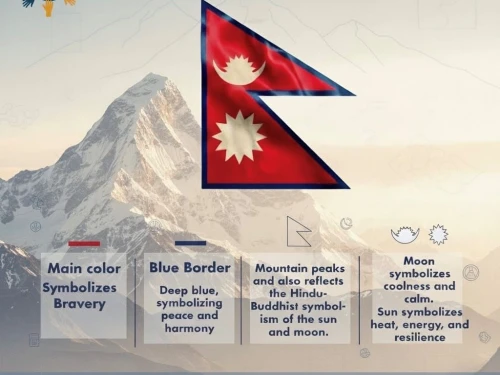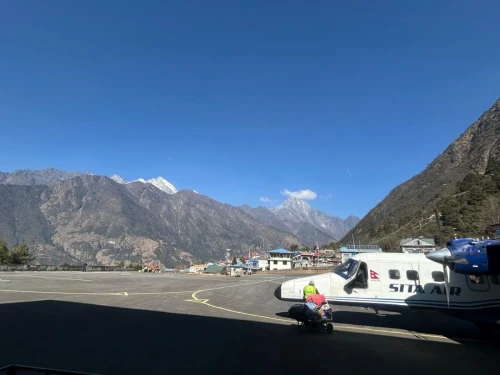Why is Mount Everest Still Growing?
Did you know Mount Everest is rising by about 4 millimeters yearly? This is due to the ongoing tectonic activity between the Indian and Eurasian plates. The collision between the two plates, which started around 50 million years ago, has formed in the Himalayan Mountain range, including Mount Everest. As the Eurasian plate pushed upward and the Indian plate pushed northward, this reason the rocks beneath Everest buckled and folded making a big mountain.
In addition, this tectonic regular collision leads to the Himalayan rise gradually, however, with erosion of water, ice, and wind, Mount Everest grows by an average of 4 millimeters each year, although this rate can vary depending on seismic activity.
Another main reason for the earth’s growth is Earthquakes and other geological events. This region has high tectonic stress, and these earthquakes can cause the mountain to rise or shift more significantly. For instance, the 2015 Nepal earthquake resulted change in the height and structure of Mount Everest.
What can Everest teach us about Earth’s History?
Mount Everest provides crucial information about Earth’s history, also making it an important subject for geological history exploration. In the highlands of the mountain, Everest displays rock formations that were once part of ancient marine fossils that date back 450 million years. Furthermore, the limestone and marine fossils provide proof of tectonic plate movements and the collision between two plates such as the Indian and Eurasian plates, which caused the rise of the Himalayas.
In addition, scientists studying the geological layers and deeper insights into plate tectonics collision, and earth's evolutionary process, and climate changes over millions of years. This research not only finds the past of the history of the earth but also subscribes to modern studies on seismic activity and environmental shifts.
In conclusion, this formation makes Everest a living laboratory, and its glacier and weather patterns provide clues about past climate conditions and the effect of global warming on the region. In this way, Everest acts as a time capsule and preserves a record of Earth’s changes from ancient seas to its highest peaks.
Why important for the formation of Mount Everest?
The formation of Mount Everest, the highest mountain in the world is a result of a tectonic plate collision process approximately 50 million years ago. The Indian subcontinent plates collided with the Eurasian plate, and a momentous tectonic collision event created the Himalayan range, including Everest.
The formation of Mount Everest affects both the geography and climate of Asia, as it plays a significant role in influencing the monsoon season paths in Asia, and in influencing rainfall, avalanches, and glaciers throughout the region. In addition, the formation of Mount Everest attracts millions of visitors, climbers, and adventure hikers per year.
Furthermore, Mount Everest's formation has been a natural laboratory for scientists studying mountain building, plate tectonics, and the Earth's crust dynamics, providing valuable insights into the planet's geological history.
What types of rocks are found on Mount Everest?
Mount Everest was formed of many types of rocks, primarily due to the complex tectonic processes that formed the mountain. The summit of Everest is mainly of three types of rocks such as sedimentary rocks, metamorphic rocks, and igneous rocks, which were originally formed under the sea. The sedimentary rocks like limestone and marble, which were originally formed under the sea, these rocks uplifted during the collision of the Eurasian and Indian tectonic plates. This rock found at the summit is highly compressed, and it provides evidence about the mountain’s formation, providing how ancient oceanic accumulation has been pushed to higher elevations.
Additionally, the lower area of Mount Everest is found of metamorphic rocks like schist and gneiss, the intense heat and pressure transformed them into picturesque, layered stones. Add to the mountain's complexity and are an important part of Everest's geologic makeup.
Furthermore, the lower reaches of Mount Everest also contain igneous rocks formed from the cooling and freezing of molten rock. Finally, the combination of these rock types sedimentary, metamorphic, and igneous makes Mount Everest a fascinating geological site for scientists and a key area for studying the earth’s crust.
In Conclusion: The Geological Legacy of Mount Everest
Well, we have also discussed the history and geological structure, found rocks, and how Mount Everest formed in the above topic. In conclusion, Mount Everest (8848.86 meters), the world’s highest mountain stands to the incredible geological forces that formed from the collision between the Indian and Eurasian tectonic plates, this procedure started approximately 50 million years ago. This giant convergence pushed up layers of rock, sediment, and ancient seabed, forming the Himalayan Mountain range. Nowadays, Mount Everest continues to grow 4 millimeters per year due to ongoing tectonic activities, symbolizing the ever-changing landscape of the Earth.
In addition, Mount Everest is a great destination for trekking or climbing adventure seekers, geologists, mountaineers, hikers, and nature enthusiasts. Mount Everest not only offers a geographical marvel but also historical timelines of the earth’s evolution. Its formation and continued growth serve as a reminder of the powerful forces beneath the earth’s surface.
Explore Mount Everest Himalayan Region of Nepal: Popular Trekking Routes in Mount Everest
Everest Base Camp Trek, Everest Circuit Trek, Everest Panorama Trek, Everest View Trek, Everest Base Camp Trek With Helicopter Return, Gokyo Lake Trek





 4 reviews
4 reviews.webp)



